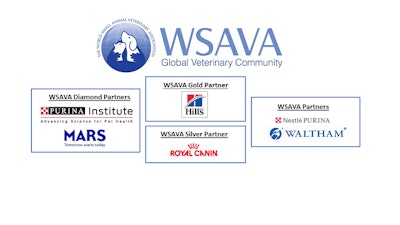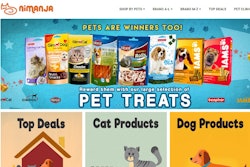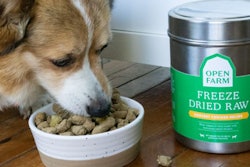
Previously, I have discussed how pet food recommendations from the Pet Nutrition Alliance (PNA) provided a false sense of security, especially in the wake of the Hill’s vitamin D recall. Now I will focus on the World Small Animal Veterinary Association (WSAVA) and how it fails to address or provide proper security to anyone providing pet food recommendations based on its criteria. Although the WSAVA recommendations for selecting pet foods are more thorough than the PNA guidelines, they still have significant gaps and need a major overhaul.
Who formulated your pet food?
WSAVA recommends that retailers, veterinarians and consumers ask of pet food companies, “Do you employ a full-time, qualified nutritionist?” and also about the nutritionist’s credentials. Why? WSAVA and similar groups will have you believe that simply having a nutritionist as full-time staff means the food is going to be safe and nutritionally adequate; however, it may not mean that nutritionist formulated and/or validated the foods. If the nutritionist works in the sales, marketing or educational department making brochures and presentations for the company, then what is the value of having that person on staff from a food standpoint? None!
Asking the question, “Who formulated the pet food currently in the marketplace?” is very different from, “Do you employ a full-time nutritionist?” You will likely get a different answer based on how the question is asked. It’s a fact that companies with huge portfolios often do not have nutritionists formulating all their foods from concept to what ends up in the marketplace.
Also, having a board-certified nutritionist as an “advisor” for the company does not mean anything, either. What you really want to know is, “Did a qualified nutritionist formulate the pet food from concept to delivery of the finished product that is on the shelf in the marketplace today?” Followed by, “Is that the case for every one of your pet foods that exists in the marketplace today?”
This gives transparency into who is truly behind all the products. If a company has a nutritionist on staff and that person is not involved in the formulation, then asking whether the company has a staff nutritionist is irrelevant and can be misleading.
Nutrient content of pet foods
People (including those involved with WSAVA) should not be afraid to ask pet food companies, “What is your typical third-party analysis for all your foods?” WSAVA does not have this as a part of its criteria, even though all pet food companies should be able to answer this question. In reality, many can’t meet the criteria because most do not analyze their final products that end up in the marketplace, or at least not all of their products, for nutritional adequacy. Why? Simply because it is not a requirement for a pet food to enter the marketplace, given the low barrier for entry.
Based on WSAVA guidelines, a pet food company only needs to provide a complete nutrient analysis for one formula in their portfolio to meet the nutritional criteria. Considering we’re in the time of open-access journals and things called websites, WSAVA should be asking, “Do you provide a complete AAFCO nutrient analysis for all your pet foods on your website?”
Also, WSAVA should want to know the quality of the pet foods by asking the simple question, “Do you provide digestibility results for all your products on your website?” Then you would know the actual nutrient content of all the foods and would understand nutrient availability of the food as well. This is especially important when crude protein of kibble foods can range from 60 to 90%!
Nutrient analysis and digestibility results are not proprietary. If they were, then people would not be able to send a pet food to a third-party analytical lab and a digestibility study to get the answers themselves. Formulas are considered proprietary, nutrient analysis and digestibility are not – they are two very different things! Any company that tells you otherwise either has a significant knowledge gap and/or a transparency problem. Both consumers and veterinarians have a right to understand the nutrient quality, availability and digestibility of pet foods they recommend and feed.
Where are your pet foods produced and manufactured?
Many consumers, retailers and veterinarians have been taught that a company owning its pet food manufacturing facility equals better quality control and food safety. That is inaccurate and provides a false sense of security.
Here is why: In January 2019, Hill’s Pet Nutrition issued three recalls (initial recall plus two significant expansions) tied to vitamin D toxicity in canned dog foods made in its own manufacturing facility in Topeka, Kansas. In November 2019, Hill’s received a warning letter from the Food and Drug Administration (FDA) citing the root causes of the issue being failure to obtain a certificates of analysis upon receipt of the vitamin premix from its supplier, failure to test, failure to evaluate against its specifications and subsequently failing to reject the vitamin premix containing excess vitamin D.
Ironically, these steps were required by Hill’s food safety plan. Yet, FDA could not verify if corrective actions would work since Hill’s was not following its own written procedures in the first place. Nor did the company identify the root cause in the failure to follow them (i.e., complacency, cost savings, could not wait for analytical results, etc.).
Other pet food companies, such as Evanger’s Pet Foods, own their facilities, manufacturer their own food, as well as food for other companies, and have been plagued with significant quality control, sourcing and legal issues. Have we forgotten about the pentobarbital issues? Clearly, owning the facility didn’t prevent any of those problems.
Food safety and quality control
Besides WSAVA believing that employing a full-time, credentialed nutritionist equates to a better food, it also believes that certain quality control measures a company has in place warrants a recommendation as well. Well, the recalls discussed above prove that theory wrong and provides evidence that the fox is watching the hen house.
What good are the procedures if you do not follow them? That is not rhetorical; FDA literally asked Hill’s that question! Now, if WSAVA asked, “Do you have a third-party certification for quality control procedures and food safety?” then they would get a vastly different answer. There are many third-party organizations that routinely audit and provide certifications for proper quality control and food safety procedures and documentation. More importantly, the certifications make sure companies adhere to them with yearly or bi-annual audits.
In fact, many co-manufacturers go through a third-party annual (or bi-annual) food safety audit similar to programs like Safe Quality Food (SQF) Institute to receive a certification. If a company fails to meet the requirements, it loses the certification. In short, the consumer does not have to trust that the pet food company or manufacturer is doing what it’s supposed to be doing; instead, you should simply ask if they are actively credentialed. Many companies that do have third-party certifications (e.g., SQF, ISO, etc.) tout them on their websites.
I wonder how many of the companies that own their manufacturing facilities have third-party certifications? This is also not proprietary, so ask them! Lastly, if you search recalls on the FDA website, ironically most of them come from companies that own their plants.
What kind of pet food research has been conducted?
Are the results of studies published in peer-reviewed journals? WSAVA alludes to the fact that manufacturers who conduct and publish research in peer-reviewed journals are somehow superior. However, they seem to forget that research and published, peer-reviewed papers do not all equal good science. Much of the research conducted by companies that WSAVA supports is for self-interest (e.g., product development) and also proprietary. Meaning, veterinarians and consumers are never able to truly review all data and results.
Ultimately, many companies publish meaningless studies and inadequate data that do not benefit the companion animal nutrition community as a whole. Conflict of interest is also a factor to consider. Just because a pet food company is not publishing research, that’s not a disqualifier for a pet food as long as the company is doing due diligence via analysis, food safety and have a qualified person and/or team behind the formulation.
Time for an overhaul of pet food recommendations
Although the WSAVA recommendations for selecting pet foods may have been of some value when published in 2013, it is time for an overhaul. They should actually provide transparency into the pet food industry as a whole, not for a select few “industry partners” who are not really as transparent as you may think when you rephrase the questions properly.
Additionally, if these are in fact “recommendations” based on important criteria for pet foods, should not all of Hill’s canned dog products implicated in the vitamin D recalls come off the WSAVA-recommended list? If WSAVA takes the time to update its recommendation guidelines with the criteria I’ve suggested here, it should consider involving people who do not have any potential financial gain, either from pet food sales or academic research funding.
On a positive note, WSAVA is more transparent in that it does provide an easily accessible list of its industry partners and ranks them based on contributions; however, it does leave some people scratching their heads why Nestle Purina and Mars Petcare would contribute in multiple tiers, versus just the parent company.

















